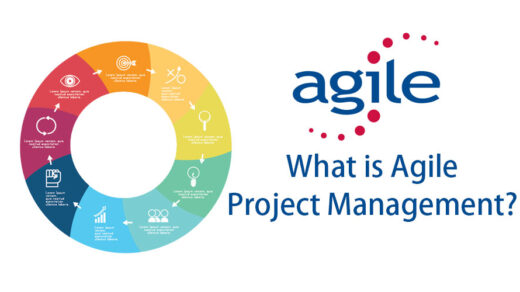Server-side rendering (SSR) is a technique that renders a web page on the server rather than in the browser. When a website’s JavaScript is rendered on the website’s server, a fully rendered page is sent to the client and the client’s JavaScript bundle engages and enables the Single Page Application framework to operate.
What is Server-Side Rendering?
Server-side rendering is exactly what it sounds like rendering on the server. When you do this, you’ll create an HTML file with all of the content of the site and send it back to the user. The user will then get a fully rendered HTML page that contains all of the necessary information for them to see your site without having to wait for any JavaScript or CSS files to load. This means that users who visit your site will be able to see everything much faster than if they were just looking at a blank screen while waiting for JavaScript files to load.
How server-side rendering works
When done well, SSR can greatly improve performance, because it enables you to render content before it is sent down to the client. It also reduces page load time and improves SEO by sending the page’s content earlier than if you were to send it after the page has loaded.
Server-side rendering is used in many popular JavaScript frameworks, including Angular and React.
Benefits of Server-Side Rendering
Some advantages of server-side rendering include:
- Faster load time. A server-side rendered application speeds up page loading when the user suffers from a slow internet connection. Thus it greatly improves the whole user experience.
- Easy indexation by search engines. As the content can be rendered before the page is loaded when rendering server-side, search engines can easily index and crawl it.
- There are fewer issues with social media indexing. Social media crawlers, like search engine bots, have difficulty indexing JavaScript content. Client-side rendering is not supported by Facebook’s Open Graph Protocol or Twitter Cards, for example. If social media sharing is an important part of your marketing strategy, server-side rendering may be a better option.
- Better in terms of accessibility. SSR apps are better suited for people who use older devices with less powerful CPUs because the server sends pre-rendered content to the browser. Because assistive technologies such as screen readers cannot always parse client-side JavaScript, server-side rendering is frequently recommended for SPA accessibility. So, server-side rendering helps efficiently load web pages for users with slow Internet connections or outdated devices.
Drawbacks of Server-Side
Here are some disadvantages of server-side rendering:
- Increase in expenses. In order to deploy an SSR application, you’ll need to pay for a server or, at the very least, a “serverless” backend, which means higher running costs. Although server-side rendering is not the default for JavaScript websites, it can be costly and resource-intensive, and the server bears the full burden of rendering content for users and bots.
- May cause slower page rendering. Server-side rendering is ideal for static HTML site generation, but in more complex applications, frequent server requests and full page reloads can result in overall slower page rendering.
- Problems with compatibility. A number of third-party libraries and tools are incompatible with server-side rendering.
- HTML with a larger size. Because of the embedded hydration state, SSR apps have a larger HTML size. This is not an argument against SSR, but rather something to consider as a potential risk if it is implemented incorrectly.
Server-Side Rendering Frameworks and Tools?
Server-side rendering frameworks are tools that help with the process of rendering the web page on a server. The client-side rendering is done either by the browser or a JavaScript library, whereas server-side rendering is done by the server.
There are many frameworks available today for these tasks, but some of the most popular ones include:
- Vue.js – It’s an open-source JavaScript framework for building user interfaces, which can be used in conjunction with other frameworks to provide a full-stack solution for developing web applications.
- React.js – A JavaScript library that lets you create reusable UI components and easily compose them with Flux or Redux to build large apps with high scalability using functional programming concepts.
- Ember.js – A complete framework for building web applications in JavaScript, which uses conventions over configuration and provides default solutions for common problems such as routing and templating.
- Angular – Has a server-side rendering tool called Angular Universal.
Processing server-side JavaScript necessitates the use of a Node. js-based backend JavaScript frameworks, such as Express.js or Hapi. These backend frameworks process network requests, render components on the server, and return pre-rendered HTML to the browser. They can be used in conjunction with any front-end JavaScript framework.
Server-Side Rendering vs Client-Side Rendering
Server-Side Rendering (SSR) and Client-Side Rendering (CSR) are two terms that describe how a web page gets rendered. They’re used to refer to the process of loading a page and displaying it on your computer or mobile device. In general, SSR means that the page is being rendered on the server, while CSR means it’s being rendered on your computer. When you’re building a website, you have to decide whether to use server-side or client-side rendering.
- Server-side rendering (SSR) means that the content of your site is generated on the server, then sent to the browser. This is useful for SEO purposes because search engines can “see” the content of your site before they send it to users. However, with SSR, users need to wait for their browsers to load before they see anything on their screens—and on slow connections or expensive data plans, this can make things feel slow.
- Client-side rendering (CSR) means that when a page loads in a browser, it doesn’t have much content at first — just an HTML skeleton with some CSS styling information attached. As soon as possible after loading (usually within just a few seconds), the rest of the page’s content is sent from the server and rendered into place within that initial HTML skeleton so that when users scroll down further into your site they don’t see any blank space any more. This makes for much faster reads on slower connections where data costs might not be as high as they are.
Summary:
SSR is generally better for SEO because search engines can index your pages before they’re loaded in the browser. This can help with the crawl rate and ranking of your site overall. It also makes it easier for search engines to see what content you have available on each page, which can help with content discovery and engagement metrics like bounce rate or time on site. Additionally, SSR can be useful for sites that have dynamic content (such as blogs) or want to keep certain elements hidden until after they’ve been scrolled down below an article’s fold (like an image gallery).
Client-Side Rendering is generally better for user experience because it loads faster and doesn’t require additional resources from the server until after they’ve been scrolled down below an article’s fold.
Both SSR and CSR have their pros and cons — the decision about which approach is best for your project will depend on what kind of features your app needs.



